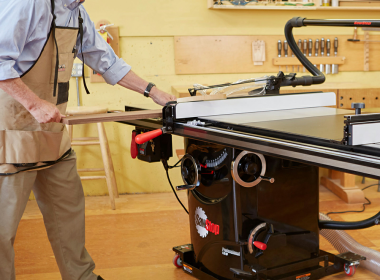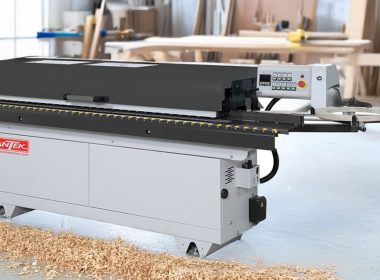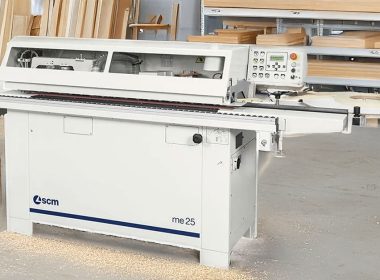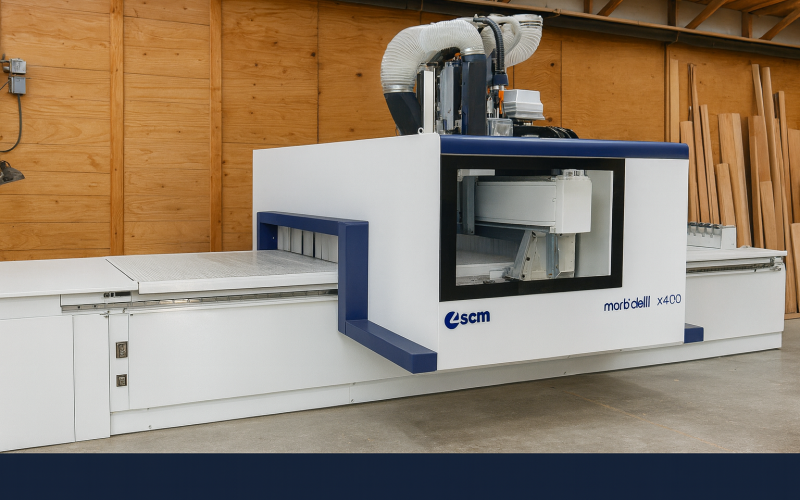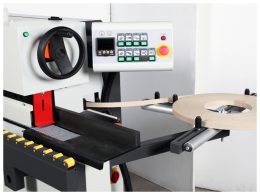Most shops choose a CNC router by scrolling spec sheets in February or March, chasing the biggest work envelope for the lowest price. They skip the test cut. They assume any frame will hold tolerance on white oak, any spindle will carve clean edges, and setup takes five minutes because the brochure said so.
Then the first door panel comes off the table with burn marks and chipped corners. The gantry flexed, the hold-down slipped, or the controller lagged on toolpath changes. After 47 test cuts, there’s no returning the machine.
This guide works backward from real shop jobs—cabinet carcasses, hardwood signage, and a solid maple tabletop—to show which specs, questions, and tests matter before you buy. No guessing. Just proof.
Start Here: The Fast Decision Path for Buying CNC Router
TL;DR: Let your first three jobs define bed size, accuracy, and spindle power—ignore everything else this month.
Start with your work, not the brochure. Pick three projects you’ll cut next month and match them to realistic thresholds. Which two specs will actually change your results next week? Focus on true positional accuracy and cut throughput—the specs that drive quality and productivity.
Every spec should answer one question: Will it save minutes or reduce scrap this month? If it doesn’t, park it. You’ll make a smarter decision by ignoring noise.

A CNC Buyer’s Decision Tree That Matches Shop Reality
Here’s a five-step process that links specs to real outcomes:
- List your next jobs. Include materials, thickness, and part sizes (e.g., “12 cabinet sheets,” “walnut plaques,” “live-edge slab flattening”).
- Set your minimums. For most shops: 48×96 in. bed, ±0.005 in. accuracy, 6–9 hp spindle.
- Match drive and motion.
- Rack-and-pinion + steppers = speed for sheet goods.
- Ball screws + servos = precision for joinery.
- Check hold-down. Vacuum tables for sheets, fixtures for small parts. Ask for verified tolerances across the full table—not just the center.
- Run a test. Send one annotated DXF to two vendors. Use the same bit, material, and feeds. Compare cut time, feature accuracy, and edge finish.
This path converts marketing claims into measurable proof—so you buy for your work, not their brochure.
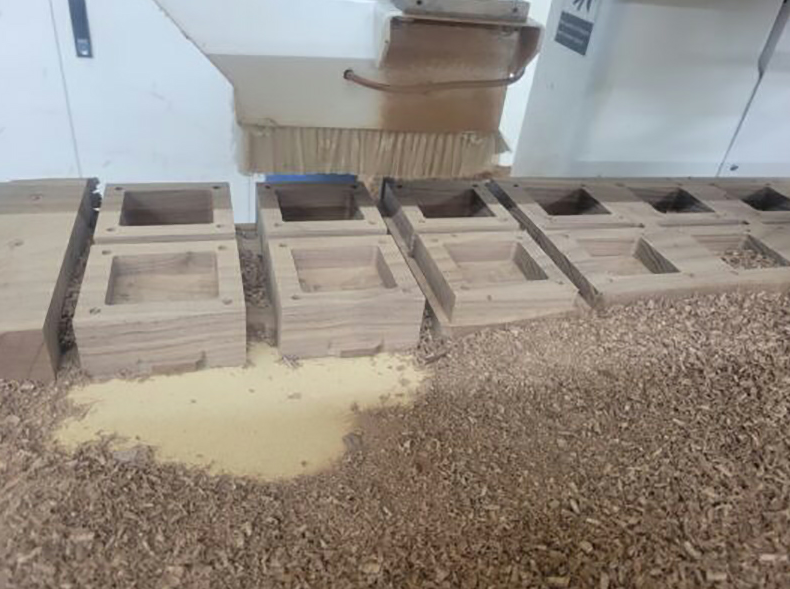
Machine Classes and Specs Decoded for Woodshops
Three CNC classes shape performance through stiffness, repeatability, and acceleration. You’ll feel the difference in edge quality and cycle time.
| Class | Repeatability | Acceleration | Runout | Use Case |
|---|---|---|---|---|
| Hobby | ±0.20–0.40 mm | 200–400 mm/s² | 20–40 µm | Signs, jigs |
| Router Kit | ±0.05–0.15 mm | 500–1200 mm/s² | 10–25 µm | Joinery, small batches |
| Industrial | ±0.01–0.03 mm | 1500–3000 mm/s² | 3–10 µm | Production, hardwood, 8+ hr runs |
Why it matters: Runout shows up as chatter and sheen. We saw Ra drop from 4.2 µm to 2.1 µm on maple by tightening runout from 28 µm to 9 µm. Acceleration also cuts hours: the same nested path at 350 mm/s² took 3:54; at 1400 mm/s², it finished in 2:11—with crisp corners.
Test this yourself:
- Cut a 40 mm square ten times and check drift with a dial indicator.
- Measure TIR on a 6 mm gage pin 10 mm from the collet.
- Compare cycle times at two accel limits.
- Time tool changes with and without probing macros.
You can run these in an afternoon—and know exactly what you’re buying.
Buy on Verified Runout and Delivered Airflow, Not Brochure RPM
What Good Runout Looks Like
Runout is tool wobble. For cabinet-grade work, aim for ≤0.01 mm (0.0004 in) TIR at the tool shank, measured 10 mm from the collet. For rough plywood cuts, ≤0.025 mm is acceptable.
Runout overloads one flute, heats the tool, and shortens life. Always measure at the tool tip, not the spindle nose. A router with tighter TIR outperforms a faster one with wobble every time.
Dust Collection That Keeps Up With Real Cutting
For a 3–4 hp spindle cutting 19 mm plywood with a ¼ in. bit, target 350–450 CFM at the shoe and 6–7 in. water column static pressure. Measure with an anemometer at the hood and a manometer at the blower. Weak dust capture ruins finish quality and air quality alike.
Plan duct size and blower horsepower now—before installation day surprises you.
Showroom Test: 5-Minute Checks Before You Sign
In five minutes, you can spot deal-breakers:
- Inspect collet and nut for even taper contact.
- Measure TIR; walk away if it exceeds 0.01 mm.
- Cut a small rectangle in plywood—look for clean, fuzz-free edges.
- Check dust flow and listen for smooth travel.
If results fall short, ask for a different collet, a shorter hose, or the blower curve in writing.

Shop and Support Basics That Protect Cut Quality
Power: 208–240V three-phase, 30–60A per spindle, <5% voltage sag.
Dust: 350–500 CFM at 6–8 in. w.c.
Air: 90–120 PSI, 5–8 SCFM for ATC.
Space: 3 ft. clearance around table.
Vibration: <2 mm/s RMS during rapids.
Good prep prevents tool wear, chatter, and cut drift. Once your shop is ready, it’s time to vet the people behind the machine.
Vendor Support Benchmarks That Predict Uptime
Hardware fails. Service keeps you running.
| Metric | Target |
|---|---|
| First response | ≤4 business hours |
| Resolution | ≤3 business days |
| Spare parts ship | ≤72 hours |
| Training | 8–16 hours on-site |
| Warranty | 1 year minimum |
Ask for named escalation contacts, not a helpdesk address. Get everything in writing—response times, loaner parts, and training hours. These benchmarks protect your production schedule and cash flow.

Quick Pre-Purchase Audit
Before you sign, verify the basics in one afternoon:
- Power and Air: Log voltage and PSI during rapids and ATC.
- Dust: Measure CFM and static pressure at the shoe.
- People: Request written SLA and escalation names.
- Process: Ask for onboarding plan and two references.
- Machine Proof: Get signed build tolerances and spindle duty rating.
If a vendor hesitates, that’s your signal to pause the deal.
Pressure-Test the Machine Before You Buy
Run this 45-minute demo on your own stock:
- Cut and measure a 600 mm “L” for squareness (≤0.10 mm).
- Rehome 50 times; verify ≤0.03 mm repeat spread.
- Cut at quoted feed and compare programmed vs. actual feed (≥95%).
- Watch spindle load for smooth, steady traces.
- Confirm visible drop in dust with airflow on vs. off.
Bring your own bits, boards, and dial indicator. The right vendor will welcome this test.

Vet the Vendor Like You Vet the Machine
Ask for data, not promises:
- Support logs: Median response ≤4 hrs, resolution ≤3 days.
- Parts: 85% in-stock rate, median ship ≤3 days.
- Install: Confirm training hours and backlog days.
- Contract: Named techs, onsite response windows, and upgrade policy.
A solid service record is worth more than an extra horsepower on paper.

Avoiding Mistakes when Buying a CNC Router Machine
Circle back to your three jobs—the cabinet carcass, the hardwood sign, the maple tabletop. If a CNC router machine can’t hold a clean profile on white oak, it will cost more than the twelve thousand dollars you saved skipping the demo.
Before you wire funds, demand a recorded test cut using your file, your material, and real measurements. Watch for flex, chatter, and weak hold-downs. The vendor who welcomes that test already knows their machine delivers.
Proof beats promises, every time. Your shop, your customers, and your next forty-seven panels will thank you.


